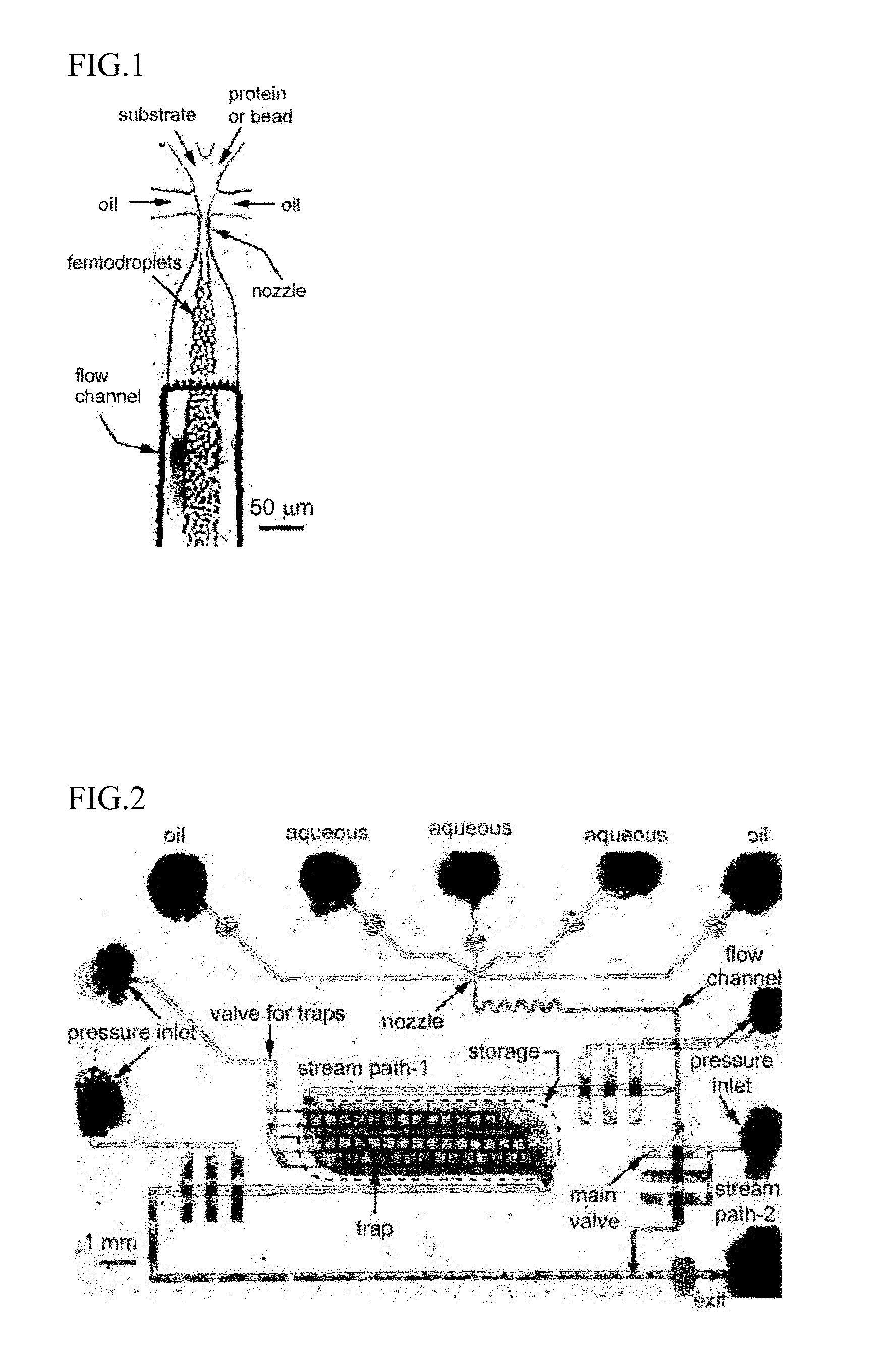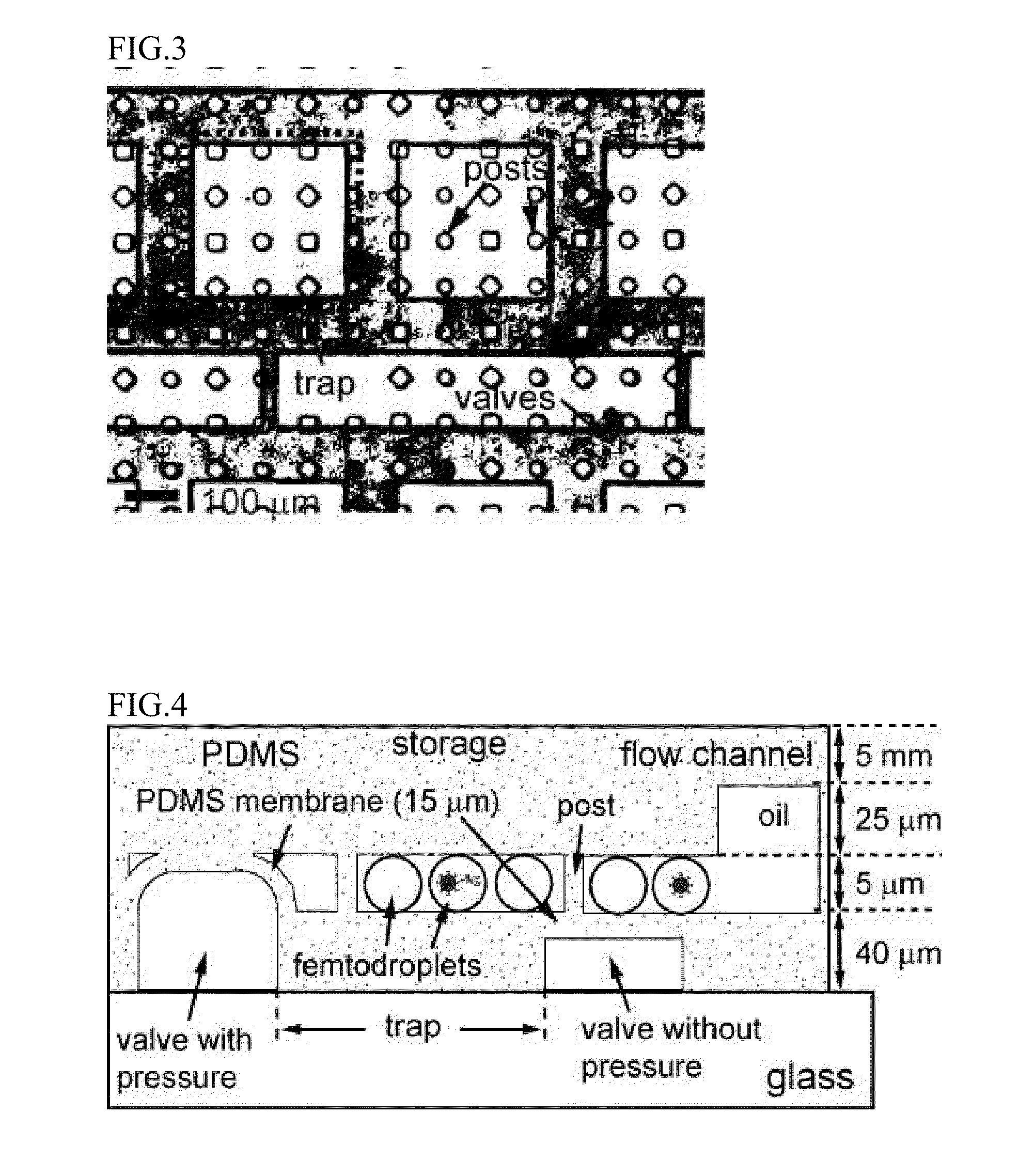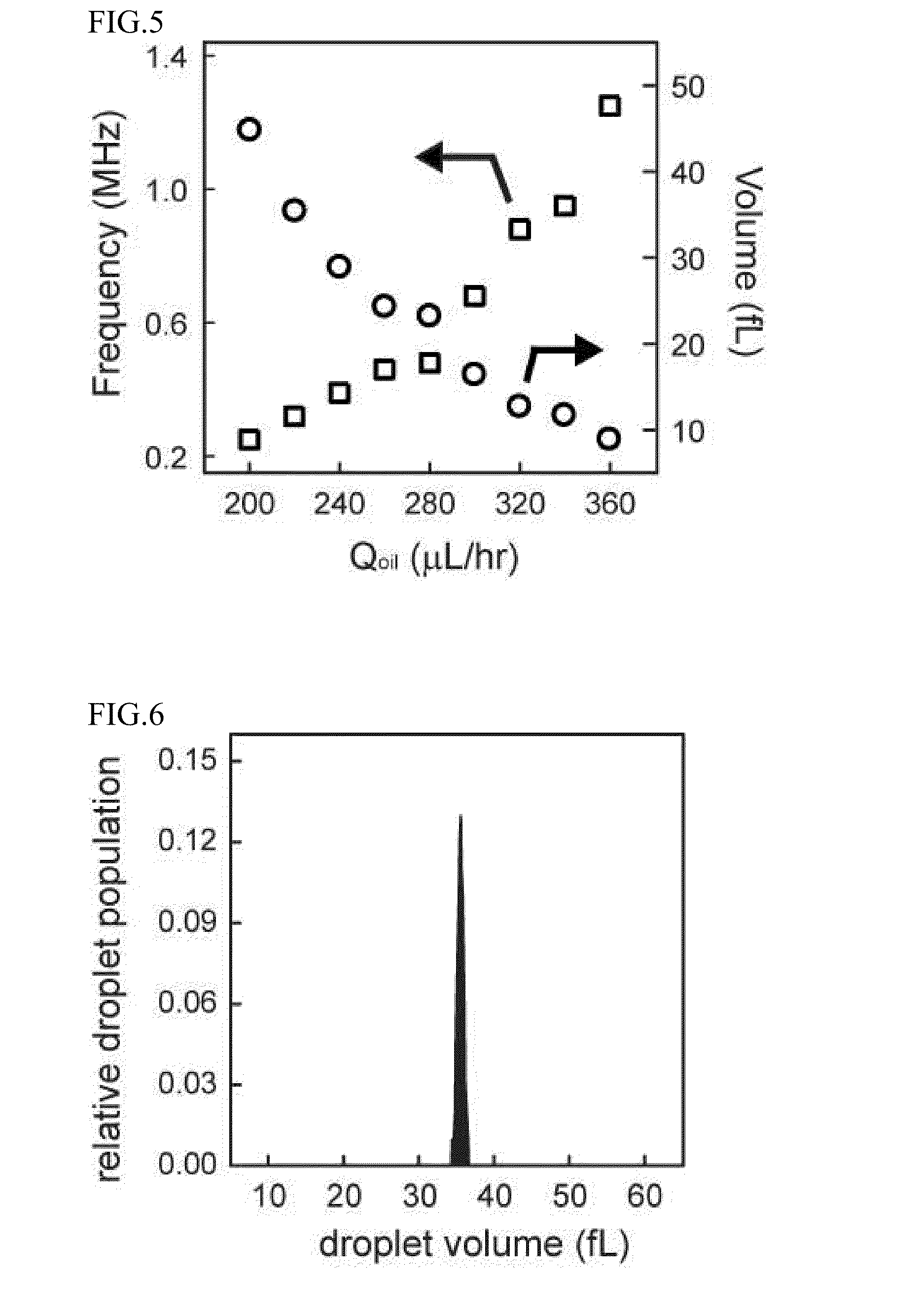Detecting low-abundant analyte in microfluidic droplets
a microfluidic droplet and analyte technology, applied in the field of microfluidic droplet detection, can solve the problems of limiting the high-throughput measurement of fast reactions, the polydispersity of the emulsion used, and the mechanical fabrication of the femtoliter reaction chamber places inherent limits on the scalability and flexibility of ultra-sensitive diagnostic assays, so as to enhance the detection throughput of femtodroplet immunoassay
- Summary
- Abstract
- Description
- Claims
- Application Information
AI Technical Summary
Benefits of technology
Problems solved by technology
Method used
Image
Examples
Embodiment Construction
[0035]I describe a microfluidic device that is able to generate and manipulate droplets with volumes of 1-100 fL at MHz frequencies. This femtoliter microfluidic droplet-based approach enables the measurement of the activity of a single copy of an enzyme and can be exploited to quantify very low-abundance biomarkers by integrating a bead-based immunoassay with direct counting of individual enzyme molecules for creating a highly sensitive diagnostic test. The fluidic femtodroplet reaction chambers used in this study offer significant advantages due to the robustness and flexibility of the microfluidic circuit compare to the digital ELISAs reported by Rissin et al [Nat. Biotechnol. 28, 595-U525 (2010)]: extremely high-speed generation and manipulation of fast-flowing droplets, the ability to carry out replicate assays without replacing hardware enabling a significant enhancement of the sampling size, ease of automation and integration with other fluidic sample preparation modules and ...
PUM
| Property | Measurement | Unit |
|---|---|---|
| volume | aaaaa | aaaaa |
| width | aaaaa | aaaaa |
| width | aaaaa | aaaaa |
Abstract
Description
Claims
Application Information
 Login to View More
Login to View More - R&D
- Intellectual Property
- Life Sciences
- Materials
- Tech Scout
- Unparalleled Data Quality
- Higher Quality Content
- 60% Fewer Hallucinations
Browse by: Latest US Patents, China's latest patents, Technical Efficacy Thesaurus, Application Domain, Technology Topic, Popular Technical Reports.
© 2025 PatSnap. All rights reserved.Legal|Privacy policy|Modern Slavery Act Transparency Statement|Sitemap|About US| Contact US: help@patsnap.com



